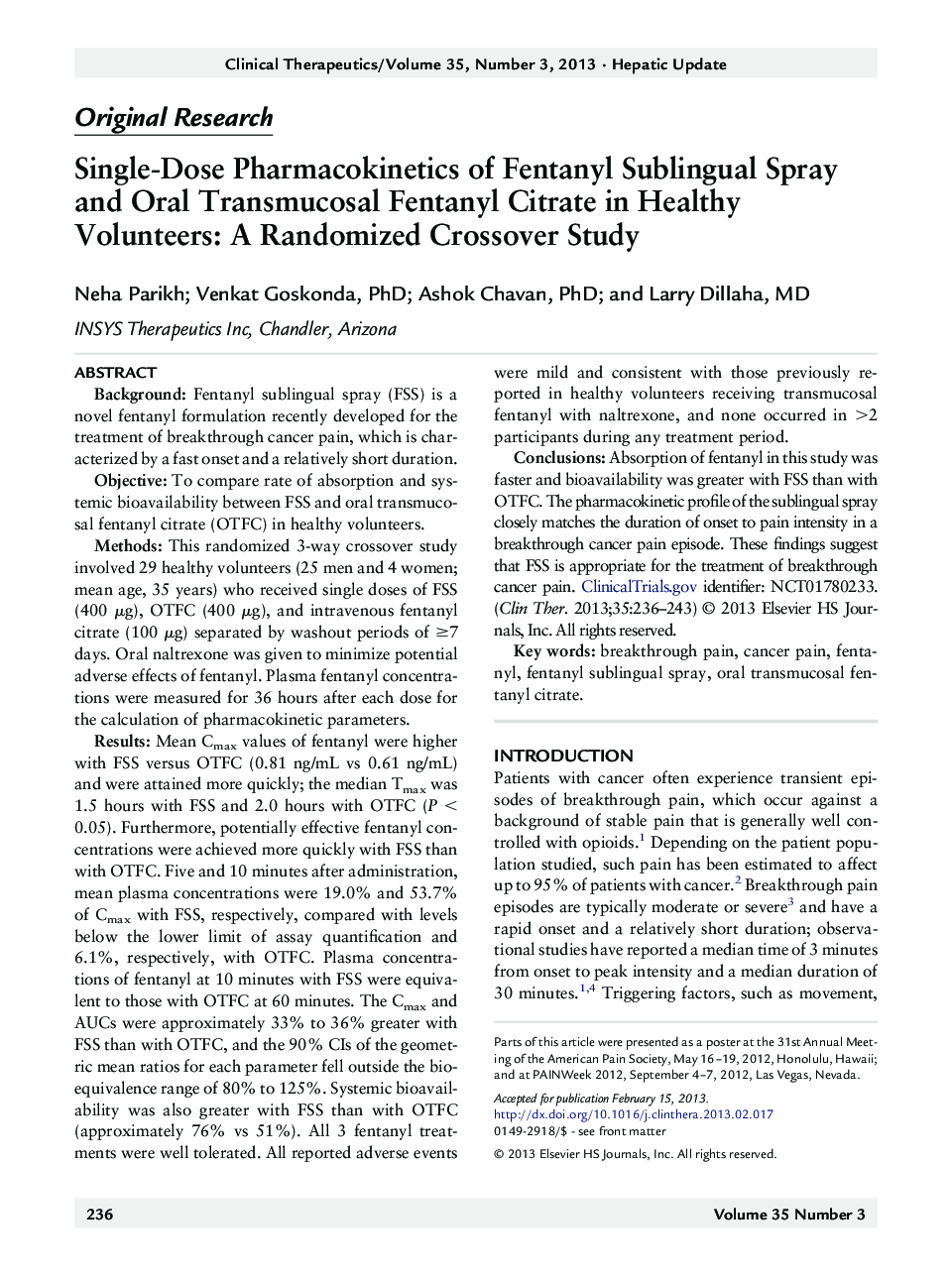| کد مقاله | کد نشریه | سال انتشار | مقاله انگلیسی | نسخه تمام متن |
|---|---|---|---|---|
| 2527468 | 1119920 | 2013 | 8 صفحه PDF | دانلود رایگان |

BackgroundFentanyl sublingual spray (FSS) is a novel fentanyl formulation recently developed for the treatment of breakthrough cancer pain, which is characterized by a fast onset and a relatively short duration.ObjectiveTo compare rate of absorption and systemic bioavailability between FSS and oral transmucosal fentanyl citrate (OTFC) in healthy volunteers.MethodsThis randomized 3-way crossover study involved 29 healthy volunteers (25 men and 4 women; mean age, 35 years) who received single doses of FSS (400 μg), OTFC (400 μg), and intravenous fentanyl citrate (100 μg) separated by washout periods of ≥7 days. Oral naltrexone was given to minimize potential adverse effects of fentanyl. Plasma fentanyl concentrations were measured for 36 hours after each dose for the calculation of pharmacokinetic parameters.ResultsMean Cmax values of fentanyl were higher with FSS versus OTFC (0.81 ng/mL vs 0.61 ng/mL) and were attained more quickly; the median Tmax was 1.5 hours with FSS and 2.0 hours with OTFC (P < 0.05). Furthermore, potentially effective fentanyl concentrations were achieved more quickly with FSS than with OTFC. Five and 10 minutes after administration, mean plasma concentrations were 19.0% and 53.7% of Cmax with FSS, respectively, compared with levels below the lower limit of assay quantification and 6.1%, respectively, with OTFC. Plasma concentrations of fentanyl at 10 minutes with FSS were equivalent to those with OTFC at 60 minutes. The Cmax and AUCs were approximately 33% to 36% greater with FSS than with OTFC, and the 90% CIs of the geometric mean ratios for each parameter fell outside the bioequivalence range of 80% to 125%. Systemic bioavailability was also greater with FSS than with OTFC (approximately 76% vs 51%). All 3 fentanyl treatments were well tolerated. All reported adverse events were mild and consistent with those previously reported in healthy volunteers receiving transmucosal fentanyl with naltrexone, and none occurred in >2 participants during any treatment period.ConclusionsAbsorption of fentanyl in this study was faster and bioavailability was greater with FSS than with OTFC. The pharmacokinetic profile of the sublingual spray closely matches the duration of onset to pain intensity in a breakthrough cancer pain episode. These findings suggest that FSS is appropriate for the treatment of breakthrough cancer pain. ClinicalTrials.gov identifier: NCT01780233.
Journal: Clinical Therapeutics - Volume 35, Issue 3, March 2013, Pages 236–243